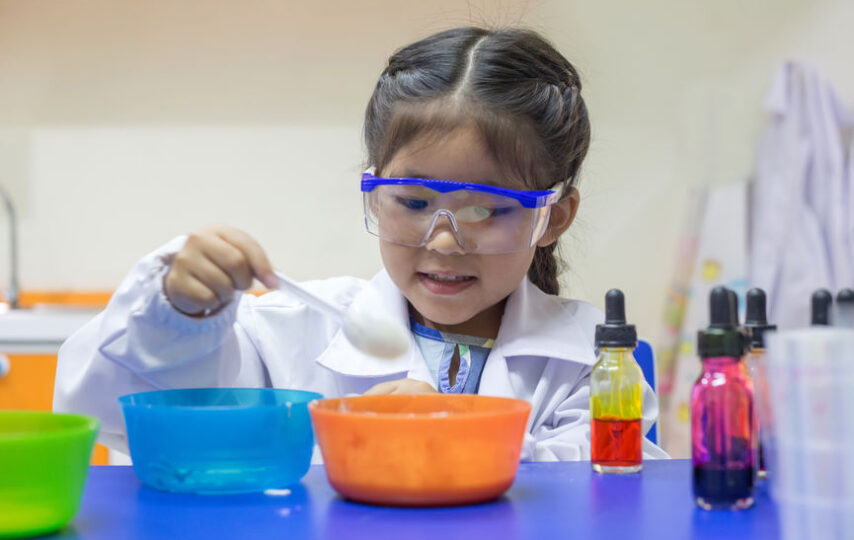What do brains and skyscrapers have in common? They are both built from the ground up. Architects lay firm foundations upon which the buildings are raised. Those foundations reach deep into the ground and support floor upon floor as the building climbs. Brains start with simple speech recognition and patterns but soon develop differentiated reasoning abilities.
Toddlers have been shown to think and reason in terms of STEM subjects (science, technology, engineering, and math). Here is why it is crucial to begin science education to support that development early.
Early Brain Development Rapid
Scientists have long known that brain development slows as we age. What is surprising, however, is how early that development slows. According to an article on the website of Harvard University’s Center on the Developing Child, during the first year of life, the brain acquires more than one million new neural connections every second. After the first year, the brain is already “pruning” off some of those connections that it hasn’t used frequently.
That pruning makes the brain more efficient in processing data from familiar sources but makes it harder to form sturdy connections with information from new areas. Language data, for instance, accumulate in a language the child hears frequently, and the brain builds upon the foundations of that language. Sounds from other languages become harder to assimilate after that “pruning” begins because they aren’t heard and used regularly.
STEM Subjects Vital Part of the Foundation
STEM subjects form the basis of the questions we all ask about the world. Science teaches us to be curious and observant. Technology shows us how to use machines to research and process information. Engineering demonstrates to us how things are put together, and math is the language through which the other three disciplines communicate.
Together, they help children learn new ways of thinking about their world. Recently, another letter has been added to the acronym. That letter is “A” which stands for arts. So, STEM learning becomes STEAM learning. Science, however, is still the first rivet to be driven into the foundation. If you are looking for inspiration for science projects 3rd grade or above, you can find many examples online.
Learning Not Only in the Classroom
The value of teaching these subjects in the classroom is obvious, but it is just as obvious that it is too late to introduce them when a child enters school at five or six. Because researchers have shown that the most rapid learning takes place between the ages of birth and three years, learning must take place at home as well.
There are many ways to introduce and foster this learning. Through the Department of Education Ready to Learn Initiative, PBS has created apps and games to help children as young as two develop language and science skills. Even after a child begins school, parents and mentors can help them continue to learn by using resources such as science projects developed with the Adobe Education Exchange knowledge and expertise in challenging the child to research and discover his world.








